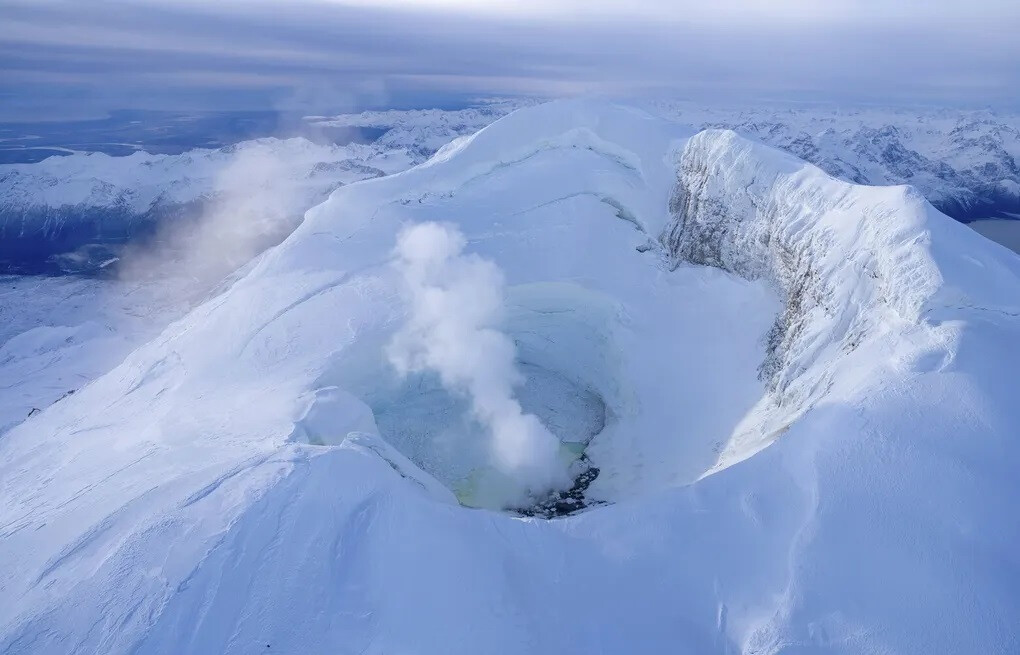
ANCHORAGE, ALASKA - Scientists are closely monitoring Mount Spurr, a 3,353-meter (11,001-foot) volcano located approximately 130 kilometers (80 miles) west of Anchorage, Alaska, due to unusual activity. In recent months, the volcano has exhibited a notable increase in seismic activity, accompanied by ground deformation and a sudden surge in gas emissions, all potential indicators of an impending eruption.
Matt Haney, the lead scientist at the Alaska Volcano Observatory (AVO), warned, "If Mount Spurr were to erupt, the force could be significant, potentially sending ash clouds as high as 15,000 meters (nearly 50,000 feet) into the atmosphere, leading to widespread ashfall in Anchorage and surrounding areas." He further noted that individual ash emission events could last for up to four hours.
Volcanic ash poses a serious threat to human health. According to the International Volcanic Health Hazard Network, fine ash particles can irritate the eyes, nose, and throat, and can significantly worsen symptoms for individuals with pre-existing conditions such as asthma, lung disease, and heart problems.
In light of these risks, Anchorage residents have begun stocking up on essential supplies. Local stores have seen a surge in demand for N95 masks, goggles, gloves, and water containers. Pet owners are also taking precautions, purchasing dog booties, pet goggles, and even respirators for their animals. Local resident Angela Gonzalez shared her preparedness efforts, including fitting her dogs with protective eyewear, in a TikTok video.
The unsettling signs from Mount Spurr first emerged in April of last year. By October, the weekly count of earthquakes around the volcano had jumped from approximately 30 to over 125. More recently, the U.S. Geological Survey (USGS) has recorded hundreds of small earthquakes within a 48-kilometer (30-mile) radius of the volcano. On April 2nd, a magnitude 3.7 earthquake occurred near Petersville. While this deeper (105 km or 65 miles) event could be related to plate tectonics, scientists are not ruling out a possible connection to rising magma.
The AVO is currently observing small, shallow earthquakes occurring beneath both the summit and the Crater Peak vent, as well as increased gas emissions. Notably, elevated levels of gas discharge were first reported on March 7th. The combination of increased seismicity, ground deformation, and gas emissions has heightened concerns that an eruption may be imminent.
While the Mount Spurr summit crater has not erupted in the past 5,000 years, Crater Peak last erupted in 1992. That eruption blanketed Anchorage in ash, darkened the sky during daylight hours, and forced the closure of the city's airport for 20 hours. Two additional eruptive events occurred in August and September of the same year, with the National Oceanic and Atmospheric Administration (NOAA) estimating the damage and recovery costs to exceed $2 million. Fortunately, no fatalities were directly attributed to the eruption, although two heart attacks, one fatal, occurred during ash cleanup efforts.
"If the volcano continues to show signs of pressure building, the next major indicator we would look for is volcanic tremor, which is a strong sign that an eruption is likely imminent," explained scientist Haney. The AVO will continue to closely monitor Mount Spurr's activity and will release further information as it becomes available.
[Copyright (c) Global Economic Times. All Rights Reserved.]






























